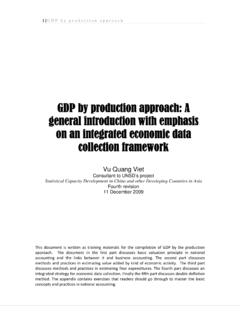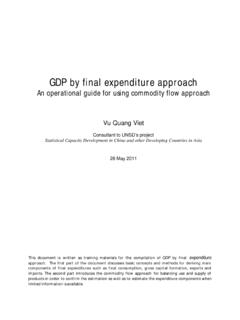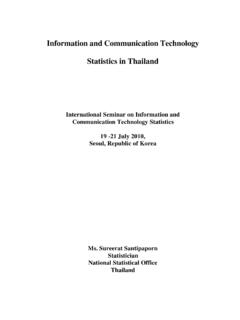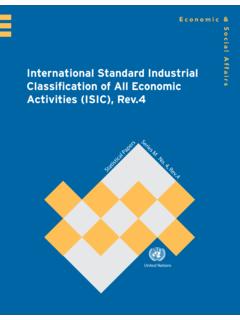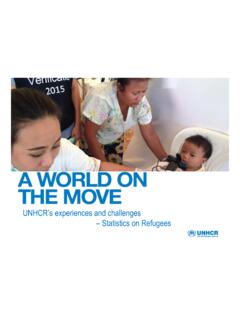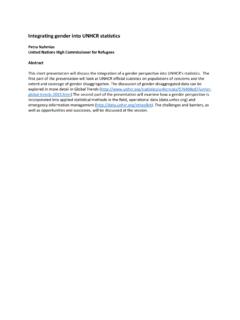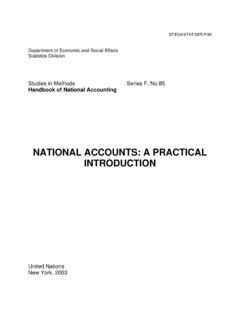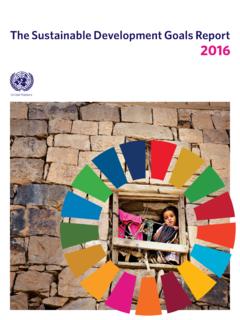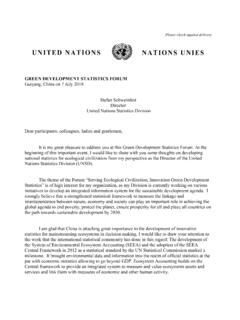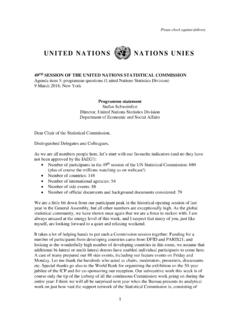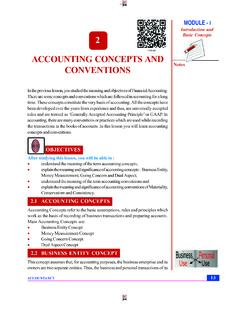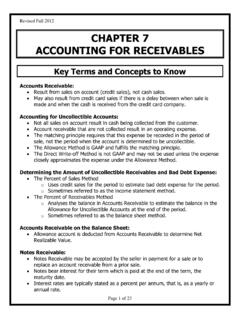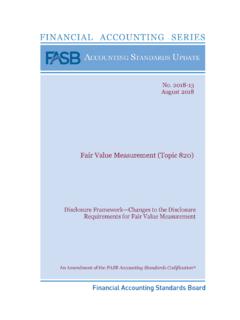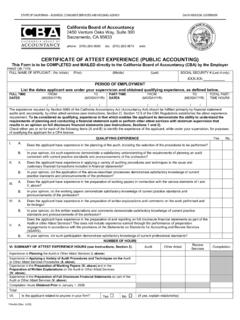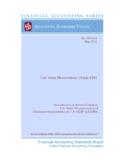Transcription of Land Use Classification - United Nations
1 LG/14/10 14th Meeting of the London Group on Environmental accounting Canberra, 27 30 April 2009 Land Use Classification Xiaoning Gong, Lars Gunnar Marklund, and Sachiko Tsuji, FAO Land Use Classification Proposed to Be Used in the System of Integrated Environmental and Economic accounting (SEEA) (Draft Version) Xiaoning Gong, FAO Statistics Division Lars Gunnar Marklund, FAO Forestry Department Sachiko Tsuji, FAO Fisheries and Aquaculture Department 23 April 2009 Thanks are due to Dominic Ballayan, Pietro Gennari, Naman Keita, David Marshall, Robert Mayo, Freddy Nachtergaele, Hiek Som, Mukesh Srivastava, and Mette Loyche Wilkie for beneficial discussions and inputs.
2 The remaining errors are those of the authors. Please address any comments and suggestions to Xiaoning Gong (Email: 2 of 18 Introduction and Background The SEEA hinges on a lot of the work being done by FAO in particular concerning definitions and classifications of the natural resources, including forestry, fisheries, land, soil, ecosystems, and water among others. As listed in its Agreed List of Issues for the SEEA Revision, one of the priorities to be tackled is: 19 a. Classification of land: There is no internationally agreed Classification of land use and land cover.)
3 Corine land cover and the FAO Classification seem to be the most commonly used classifications. Is there a way that these two classifications can be reconciled and a land use/land cover classifications agreed in the revised SEEA? Both the theory and practice tell us that although land cover (LC) and land use (LU) are closely related, thus many proposed land use classifications are actually mixing land cover and land use where natural and semi-natural vegetation are described in terms of land cover, agricultural and urban areas in terms of land use, and, in particular, the definition of forests is a combination on land cover and land use.
4 Still it is necessary to develop LU Classification separately from LC Classification due to the differences between these two and the importance of LU statistics for related policy analysis and decision making. LC is defined as the observed (bio)-physical cover of the earth s surface (Di Gregorio and Jansen 1997, 1998). Such an observation can be made by the human eye, aerial photographs, satellite sensors, or simply existing maps. The definition embraces vegetation and man-made features and includes bare rocks, bare soils, and water areas. LU can be considered as to reflect the degree of human activities directly related to land and making use of its resources or having an impact (reference: Young 1994).
5 Two key aspects of LU are the products and benefits from use of the land and the operations applied to the land in order to produce these products and benefits. LU is difficult to observe. Field and ground information such as surveys and censuses are usually required. Thus, the differences between LC and LU are: LC is about the biophysical aspect of land and LU is about the functional aspect of land. LU is the cause and LC is the effect. Many of the LU operations lead to the change in LC, which is the consequence of interactions between the natural environment (especially vegetation) and the use.
6 In some cases, it is possible to determine functional aspect from biological aspect. For instance, the use of land for nomadic or extensive grazing will frequently be based on a land cover of unimproved grassland, although this is an inference which requires field checking. In many other cases, one biophysical category may correspond to a large number of functional categories. Areas of grass may, for example, correspond to a lawn in an urban environment, an airport runway, a sown meadow, rough pasture, or a golf course. In the agricultural census, the area of the holding is classified according to its main land use.
7 Knowledge of current land use is essential to support analysis and management of land, vegetation, water resources and quality, and the maintenance of biodiversity. Land is the major agricultural and natural resources with significant impact on economic, environmental and social aspects of a nation and the world. Agricultural land-use data are important for many of the regional and global activities, 3 of 18for example, the validation of agricultural land evaluation, the preparation of perspective studies on agricultural production and food security, early warming for food security, natural disaster relief operations, farming systems studies, and policy formulation among others.
8 In this paper, a consolidated land use Classification is proposed to be used in the System of Integrated Environmental and Economic accounting (SEEA) based on the major LU databases at the global level and the work of FAO across various Departments and Divisions, including FAOSTAT, World Programme for the Census of Agriculture 2010 (WCA 2010) in Statistics Division; the Global Forest Resources Assessment 2010 (FRA2010) in the Forestry Department; efforts made by colleagues from the Natural Resources Management and Environment Department; and Fisheries and Aquaculture Department.
9 The issue of land use Classification is a truly cross-cutting one. The rest of this paper is organized as follows: in the next section, it shows that the proposed LU Classification is constructed on the basis of the major LU databases/datasets at the global level. It is followed by a section describing the structure and features of the proposed LU Classification . After that is a section of a brief note discussing issues related to the proposed LU Classification . The proposed LU Classification is presented in Table 1, related categories, concepts, and definitions are in Table 2, and a copy of the Indicative Crop Classification , which is part of the proposed LU Classification , is included in Table 3.
10 Major Global LU Datasets as the Basis for the Proposed LU Classification The objective of a LU Classification is to provide a theoretical structure to guide data collection and creation of effective databases to ensure comparability and compatibility. Accordingly, the Classification is expected to be as pragmatic and easy to understand as possible to be widely recognized and accepted. The approach taken here is to build the proposed LU Classification based on the existing LU concepts, definitions, and classifications, especially those used by the major global LU databases/datasets, among which those of agricultural, forest, and fishery land use are housed at FAO.
